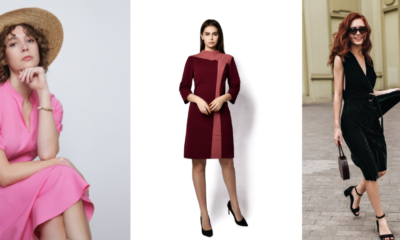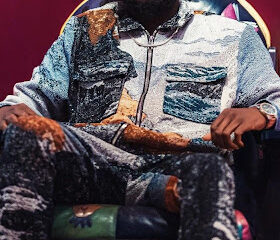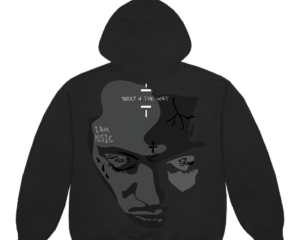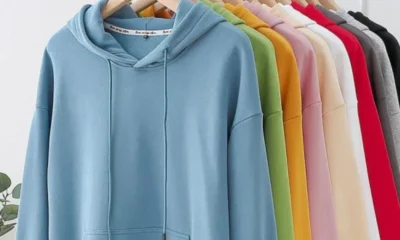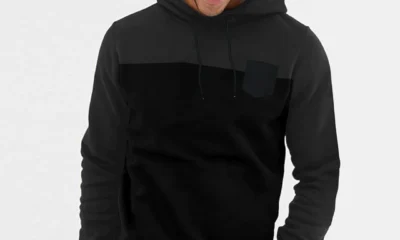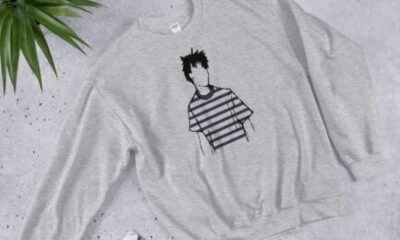Fashion
The Ultimate Guide to Sustainable Fashion in 2024

In recent years, the fashion industry has been undergoing a major transformation towards sustainability. As more people become aware of the environmental and social impacts of their clothing choices, the demand for eco-friendly fashion has surged. This guide will explore the key trends, materials, and practises shaping sustainable fashion in 2024, helping you make informed choices for a greener wardrobe.
Key Takeaways
- Sustainable fashion focuses on eco-friendly materials and ethical practises.
- Circular economy and upcycling are essential trends for reducing waste.
- Consumers are increasingly willing to pay more for sustainable products.
- Building an ethical wardrobe involves researching brands and shopping second-hand.
- Technology plays a crucial role in enhancing sustainability in fashion.
Understanding Sustainable Fashion
Defining Sustainable Fashion
Sustainable fashion refers to clothing that is made with consideration for the environment and society. It’s not just about using eco-friendly materials; it also involves ethical production practises. A truly sustainable garment should be durable, accessible, and produced in a way that respects both people and the planet.
Importance of Sustainable Fashion
The fashion industry has a significant impact on our environment. Here are some reasons why sustainable fashion matters:
- Reduces waste: The industry generates a massive amount of textile waste.
- Conserves resources: Sustainable practises help in preserving natural resources.
- Promotes fair labour: Ethical production ensures workers are treated fairly.
Common Misconceptions
Many people misunderstand what sustainable fashion really means. Here are a few common myths:
- All organic materials are sustainable: Not all organic products are produced ethically.
- Sustainable fashion is expensive: While some items may cost more, investing in quality can save money in the long run.
- Fast fashion can be sustainable: Fast fashion often prioritises speed over sustainability, leading to negative environmental impacts.
Sustainable fashion is about making informed choices that benefit both the planet and its people.
In summary, understanding sustainable fashion is crucial for making better choices in our wardrobes. By being aware of what we wear, we can contribute to a healthier planet and a fairer society.
Highlight: The website for vesture leather is launching soon, emphasising the importance of gradual brand recognition through various media. Visitors are encouraged to subscribe to the newsletter for updates.
Key Trends in Sustainable Fashion for 2024
Circular Economy and Upcycling
The circular economy is all about reducing waste and keeping products in use for longer. Upcycling, a big part of this trend, means taking old clothes and turning them into something new and valuable. This approach helps to cut down on textile waste. Retailers can make a difference by:
- Collaborating with upcycling projects.
- Creating their own upcycled collections.
- Encouraging customers to participate in upcycling initiatives.
Slow Fashion and Minimalism
Slow fashion promotes a thoughtful approach to clothing, focusing on quality over quantity. In 2024, this trend will grow as people look for:
- Timeless pieces that last longer.
- Minimalistic styles that reduce clutter.
- Comfortable athleisure wear, especially with more people working from home.
Tech-Enhanced Textiles and Design
Technology is changing fashion with smart textiles that offer unique features. These include:
- Temperature control for comfort.
- Activity tracking for sportswear.
- 3D printing for on-demand production, which helps reduce waste.
In 2024, the fashion industry will continue to evolve, focusing on sustainability and innovation. By embracing these trends, brands can meet the growing demand for eco-friendly options and contribute to a healthier planet.
| Trend | Description |
|---|---|
| Circular Economy | Focus on reducing waste and reusing materials. |
| Slow Fashion | Emphasises quality and longevity over fast fashion. |
| Tech-Enhanced Textiles | Incorporates technology for improved functionality and sustainability. |
Innovative Sustainable Materials
Recycled Polyester
Recycled polyester is made from used plastic bottles and other post-consumer materials. This material helps to reduce waste in landfills and lessens the need for new, petroleum-based resources. By choosing recycled polyester, consumers can support a more sustainable fashion industry.
Organic Cotton
Organic cotton is grown without harmful chemicals, making it a better choice for the environment. Brands like Cottonique are leading the way by using 100% organic cotton fabric, promoting eco-friendly clothing production. This not only benefits the planet but also raises awareness about responsible fashion choices.
Plant-Based Alternatives
Plant-based materials, such as pineapple leather and mushroom-based textiles, are gaining popularity. These alternatives are biodegradable and often require fewer resources to produce compared to traditional fabrics. They offer a sustainable option for those looking to make eco-friendly fashion choices.
Choosing sustainable materials is not just about style; it’s about making a positive impact on the planet. By opting for innovative fabrics, we can help reduce our environmental footprint and support ethical practises in the fashion industry.
Summary Table of Innovative Materials
| Material | Benefits | Environmental Impact |
|---|---|---|
| Recycled Polyester | Reduces landfill waste | Lowers reliance on petroleum |
| Organic Cotton | Grown without harmful chemicals | Conserves water and land |
| Plant-Based Alternatives | Biodegradable and resource-efficient | Reduces traditional textile use |
By embracing these innovative materials, consumers can contribute to a more sustainable future in fashion.
Building an Ethical Wardrobe
Creating an ethical wardrobe is about making thoughtful choices that benefit both the planet and its people. Here are some key steps to guide you:
Researching Sustainable Brands
- Look for brands that prioritise eco-friendly practises.
- Check if they use sustainable materials and fair labour practises.
- Follow brands on social media to stay updated on their initiatives.
Creating a Capsule Wardrobe
- Select versatile pieces that can be mixed and matched.
- Choose high-quality items that will last longer.
- Limit the number of items to reduce clutter and promote mindful shopping.
Shopping Second-Hand
- Thrift stores and online platforms are great for finding unique pieces.
- Buying second-hand helps reduce waste and gives clothes a second life.
- Consider swapping clothes with friends to refresh your wardrobe without spending.
Building an ethical wardrobe is a journey, not a destination. Every small step counts towards a more sustainable future.
By following these steps, you can contribute to a more sustainable fashion industry while enjoying a stylish and ethical wardrobe. Remember, supporting brands like vesture leather can make a significant difference in your fashion choices!
Ethical and Transparent Supply Chains

Fair Labour Practises
Ethical supply chains are essential for sustainable fashion. Consumers want to know that their clothes are made under fair conditions. This means ensuring that workers are paid fairly and work in safe environments. Here are some key points to consider:
- Workers should receive a living wage.
- Safe working conditions must be guaranteed.
- Regular audits should be conducted to ensure compliance.
Supply Chain Transparency
Transparency in the supply chain helps build trust with consumers. Brands should be open about where and how their products are made. This includes:
- Mapping the entire supply chain to identify all suppliers.
- Sharing information about sourcing and manufacturing processes.
- Providing details on the environmental impact of production.
Certifications and Standards
Certifications can help consumers identify brands that are genuinely committed to ethical practises. Look for:
- Fair Trade certifications.
- Organic and eco-friendly labels.
- Membership in ethical fashion organisations.
Understanding your supply chain is a key step in ensuring organic integrity. By mapping it out, businesses can spot areas that may not comply with ethical standards, helping to maintain product integrity.
Sustainable Fashion for Different Seasons
Eco-Friendly Winter Fashion
As winter approaches, it’s crucial to choose clothing that keeps us warm while being kind to the planet. Sustainable materials are essential for winter fashion, helping to reduce our environmental impact. Here are some materials to consider:
- Recycled Polyester: Made from plastic bottles, it helps decrease waste.
- Organic Cotton: Grown without harmful chemicals, it’s better for the environment.
- Bamboo: A fast-growing plant that requires less water and no pesticides.
Sustainable Summer Styles
When the sun shines, it’s time to think about light and breathable fabrics. Opt for:
- Linen: Naturally biodegradable and requires fewer resources to grow.
- Tencel: Made from wood pulp, it’s soft and eco-friendly.
- Hemp: Grows quickly and needs little water, making it a sustainable choice.
Year-Round Essentials
To build a sustainable wardrobe, consider these timeless pieces:
- Capsule Wardrobe: Focus on versatile items that can be mixed and matched.
- Second-Hand Shopping: Thrift stores offer unique finds while reducing waste.
- Quality Over Quantity: Invest in durable pieces that last longer.
Embracing sustainable fashion means making choices that benefit both our style and the environment. By selecting eco-friendly materials and supporting ethical brands, we can enjoy fashion without compromising our planet’s health.
In conclusion, sustainable fashion is not just a trend; it’s a lifestyle choice that can be adapted for every season. By being mindful of our clothing choices, we can contribute to a healthier planet while looking great!
The Role of Technology in Sustainable Fashion
Blockchain for Transparency
In the fashion industry, blockchain technology is becoming essential for ensuring transparency. It allows brands to track the journey of materials from source to store, helping consumers understand the origins of their clothing. This technology can:
- Provide detailed information about the supply chain.
- Verify the authenticity of sustainable claims.
- Reduce the risk of fraud in sustainable fashion.
3D Printing and On-Demand Manufacturing
3D printing is revolutionising how clothes are made. This technology allows brands to create garments only when they are ordered, which helps to:
- Minimise waste by reducing overproduction.
- Offer customisation options for consumers.
- Lower the carbon footprint associated with traditional manufacturing processes.
Smart Textiles
Smart textiles are fabrics that can interact with the environment. They can:
- Change colour based on temperature.
- Monitor health metrics like heart rate.
- Provide comfort by adjusting to weather conditions.
The integration of technology in fashion not only enhances the consumer experience but also promotes a more sustainable approach to production and consumption. By embracing these innovations, the industry can significantly reduce its environmental impact.
In summary, technology plays a crucial role in making fashion more sustainable. From blockchain for transparency to 3D printing and smart textiles, these advancements are paving the way for a greener future in fashion.
Consumer Behaviour and Sustainable Fashion

Shifting Consumer Preferences
In recent years, there has been a noticeable shift in how people view fashion. More consumers are now prioritising sustainable choices over fast fashion. This change is driven by a growing awareness of the environmental impact of clothing production and the desire for ethical practises.
Willingness to Pay More
Many shoppers are willing to spend extra on sustainable products. A survey revealed that two-thirds of global consumers are ready to pay more for items that are eco-friendly. This trend shows that people are increasingly valuing sustainability in their purchasing decisions.
Impact of Social Media
Social media plays a crucial role in shaping consumer behaviour. Platforms like Instagram and TikTok are filled with influencers promoting sustainable brands. This visibility encourages more people to consider their fashion choices carefully.
Summary Table of Consumer Trends
| Trend | Description |
|---|---|
| Shift to Sustainability | Increased preference for eco-friendly options |
| Higher Spending Willingness | Consumers willing to pay more for sustainable items |
| Social Media Influence | Impact of influencers on purchasing decisions |
The rise of sustainable fashion is not just a trend; it reflects a deeper change in how we think about our clothes and their impact on the world.
By understanding these shifts in consumer behaviour, brands can better align their practises with the values of their customers, ultimately leading to a more sustainable fashion industry.
Challenges and Opportunities in Sustainable Fashion
Overcoming Greenwashing
Greenwashing is when brands falsely claim to be environmentally friendly. This can confuse consumers who want to make responsible choices. To combat this:
- Look for genuine certifications.
- Research brand practises.
- Be cautious of vague claims.
Balancing Cost and Sustainability
Sustainable fashion often comes with a higher price tag. However, many consumers are willing to pay more for quality and ethics. Here are some ways to balance costs:
- Invest in timeless pieces.
- Choose quality over quantity.
- Support local artisans.
Future Prospects
The future of sustainable fashion looks promising, with increasing consumer demand and innovation. Brands that adapt will thrive. The power of thoughtful giving can also play a role in shaping a more sustainable future. By choosing brands that prioritise sustainability, consumers can drive change in the industry.
The journey towards sustainable fashion is not just about the clothes we wear, but the impact we have on the world around us. Embracing this change can lead to a brighter future for all.
Supporting Sustainable Fashion Brands
Top Sustainable Fashion Brands
When looking to support sustainable fashion, consider these top brands that prioritise ethical practises:
- Patagonia: Known for its commitment to environmental responsibility.
- Reformation: Focuses on eco-friendly materials and transparency.
- Everlane: Offers radical transparency about production costs and practises.
How to Identify Genuine Brands
To ensure you are supporting truly sustainable brands, look for:
- Transparency: Brands should openly share their sourcing and production processes.
- Certifications: Look for recognised certifications like GOTS or Fair Trade.
- Sustainable Practises: Brands should demonstrate a commitment to reducing waste and using eco-friendly materials.
The Importance of Brand Loyalty
Supporting sustainable brands is crucial because:
- It encourages more brands to adopt ethical practises.
- It helps reduce the unsustainable growth of fast fashion, which harms the environment.
- Loyal customers can influence brands to maintain their commitment to sustainability.
Supporting sustainable fashion is not just a trend; it’s a necessary shift towards a more ethical and environmentally friendly industry. By making informed choices, we can all contribute to a better future.
Practical Tips for Embracing Sustainable Fashion
Educating Yourself
To start your journey towards sustainable fashion, learning is key. Research brands that focus on sustainability and understand their practises. This knowledge will help you make informed choices. Here are some steps to guide you:
- Look for brands that are transparent about their materials and production methods.
- Follow sustainable fashion influencers on social media for tips and recommendations.
- Read articles and guides about sustainable brands to expand your knowledge.
Making Small Changes
You don’t have to overhaul your entire wardrobe at once. Instead, consider these small changes:
- Buy second-hand clothes to reduce waste.
- Choose quality over quantity; invest in pieces that will last.
- Repair your clothes instead of throwing them away. Learning basic sewing skills can be very helpful.
Long-Term Benefits
Embracing sustainable fashion not only helps the planet but can also save you money in the long run. By investing in durable pieces and reducing impulse buys, you can build a wardrobe that lasts.
Remember, every small step counts. By making conscious choices, you contribute to a more sustainable future.
Conclusion
Incorporating sustainable fashion into your life is about making informed choices and being mindful of your impact. Start with these tips and gradually build a wardrobe that reflects your values.
As you explore sustainable options, keep an eye out for brands like vesture leather, which are committed to ethical practises and transparency in their supply chains.
By following these practical tips, you can make a significant difference in the fashion industry while looking stylish!
Conclusion
In conclusion, sustainable fashion is not just a trend; it’s a necessary shift for our planet and society. As we move into 2024, it’s clear that consumers are more aware than ever of the impact their choices have on the environment. By choosing eco-friendly brands and supporting ethical practises, we can all contribute to a healthier world. Retailers must adapt to these changes by embracing sustainable materials, transparent supply chains, and innovative designs. Together, we can make a difference, ensuring that fashion is both stylish and responsible. Let’s continue to educate ourselves and make choices that reflect our values, paving the way for a brighter, more sustainable future.
-

 Blockchain Technology5 days ago
Blockchain Technology5 days agoBlockchain Beyond Cryptocurrency: 5 Game-Changing Applications You Should Know
-

 Business7 days ago
Business7 days agoDow Jones Drops Over 100 Points Amid Trade Talk Uncertainty
-

 Business6 days ago
Business6 days agoStock Futures Soar as US-China Trade Talks Yield Positive Results
-

 Business7 days ago
Business7 days agoU.S.-China Tariff Negotiations Resume Amid Economic Uncertainty
-

 Fitness & Wellness4 days ago
Fitness & Wellness4 days agoAre Smartwatches Worth It? The Best Wearable Tech of 2025
-

 Child Welfare6 days ago
Child Welfare6 days agoTrump’s Controversial Refugee Policy: Afrikaners Welcomed Amid Global Ban
-

 Government6 days ago
Government6 days agoU.S. Government Intensifies Scrutiny of Social Security Notices Amid Funding Concerns
-

 Politics5 days ago
Politics5 days agoTrump’s Administration Races Against Time to Prevent Government Shutdown




